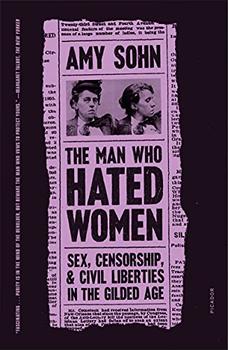Summary | Excerpt | Reviews | Beyond the Book | Readalikes | Genres & Themes | Author Bio

Critics' Opinion:
Readers' Opinion:
First Published:
Jul 2021, 400 pages
Paperback:
Jul 2022, 400 pages
 Book Reviewed by:
Book Reviewed by:
Rose Rankin
Buy This Book
1
THE DANSE DU VENTRE
It was the summer of 1893, and Ida C. Craddock was in the Cairo Street Theatre at the Chicago World's Fair, watching the belly dancers. There were about twelve of them, all in their late teens to early twenties, and as each one performed, the others sat behind her on divans to watch. Musicians played drums, woodwinds, and strings. The Algerian and Egyptian dancers wore ornamented headdresses, tiny cymbals on their fingers, knee-length peasant skirts, fringed epaulets, hip belts with vertical fabric flaps, and long beaded necklaces. Black stockings covered their legs. They had white muslin drawers to the knees, and high-heeled slippers. Their skirts' waistbands, shaped like coiled snakes, rose only to their hips, and their netted silk undervests were semitransparent. Spectators could see their navels—as shocking as a camel ride, another attraction at the World's Fair. American women were never seen in public without corsets, much less with their abdomens exposed. Victorian-era dances were led by dancing masters, who directed steps and patterns—no improvisation or gyrations.
The dancers moved their bellies coyly, clicking cymbals and swaying the upper part of their bodies. Some held bottles of water on their heads. Their gyrations grew more agitated and spasmodic as they rang their cymbals faster. Very few made direct eye contact with male audience members. When the performances reached a climax, the women would stand stock still, as if seized by something violent, and then visibly grow exhausted.
Viewers took in the belly dance with bemusement, horror, and titillation. Some cried out "Disgusting!" and fled the theater. Some men who stayed had looks on their faces that, as Craddock put it, "they would have been ashamed to have their mothers or their girl sisters see." To her, those people were philistines.
She was a thirty-six-year-old teacher with brilliant blue eyes; her complexion was clear, her features cameo-cut, and her fingers delicate and tapering. She was living in her domineering mother's Philadelphia living room behind a partition she called "the cubicle."
After having tried and failed to be the first woman admitted to the University of Pennsylvania's liberal arts program, she had become a lay scholar of comparative religion, reading voraciously at Philadelphia's Ridgway Library. She was at work on two manuscripts, one on the origin of the devil, and one on "sex worship," or sexual symbols in ancient world religions. She taught stenography at Girard College, a school for orphaned boys. By the time of her World's Fair visit, she had taught herself, and written a book on, a form of shorthand, which she believed could help ambitious men and women work their way up in business.
In the danse du ventre, Craddock saw a visual fusion of her two passions: sex and symbolism. While a teenager at Philadelphia's prestigious Friends' Central School, founded by Quakers, a lesson on botany ignited her curiosity about sex. As she recalled in a short memoir titled "Story of My Life: In Regard to Sex and Occult Teaching," the instructor, Annie Shoemaker, told the class, "Girls, whenever I take up this subject, I feel as though I were entering a holy temple." As Craddock learned how plants were fertilized, she felt "all on fire with the delight of my discovery, intellectually keen and eager … From that hour, dates the birth of my idealizing of sex."
In Chicago, twenty years after that lesson, she understood that the belly dancers' thrusts were simulating a woman's movements during intercourse. The bottle of water was an erect penis on the verge of ejaculation. And the extreme self-control was a reference to male continence, or coitus reservatus, a better-sex and contraceptive technique in which a man orgasms without ejaculating. When three women behind her at the show made sarcastic comments, she turned and said, "If you knew what that dance signifies, you would not make yourselves conspicuous by laughing at it." She believed it was a religious memorial of purity descending from ancient days. To serve God was not to choose asceticism but to experience self-controlled pleasure. After a gentleman overheard Craddock's rebuke, he was so impressed he vowed to return with his wife. This was the highest compliment she could be paid: he had been listening, he had taken her words seriously, and he was coming back.
* * *
The World's Fair, or Columbian Exposition, had opened three months earlier, on May 1, 1893. The economy was uncertain; beginning with the collapse of a major railroad that spring, the Panic of 1893 was in full swing. The U.S. Treasury was bankrupted; Americans had rushed to withdraw money from their bank accounts. By the end of the year, more than fifteen thousand banking institutions would declare bankruptcy and hundreds of thousands of Americans would be out of work.
Excerpted from The Man Who Hated Women by Amy Sohn. Copyright © 2021 by Amy Sohn. Excerpted by permission of Farrar, Straus & Giroux. All rights reserved. No part of this excerpt may be reproduced or reprinted without permission in writing from the publisher.




Judge a man by his questions rather than by his answers.
Click Here to find out who said this, as well as discovering other famous literary quotes!
Your guide toexceptional books
BookBrowse seeks out and recommends the best in contemporary fiction and nonfiction—books that not only engage and entertain but also deepen our understanding of ourselves and the world around us.